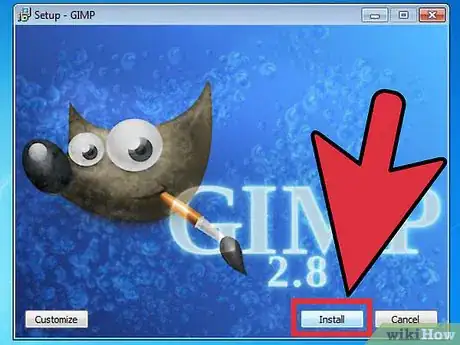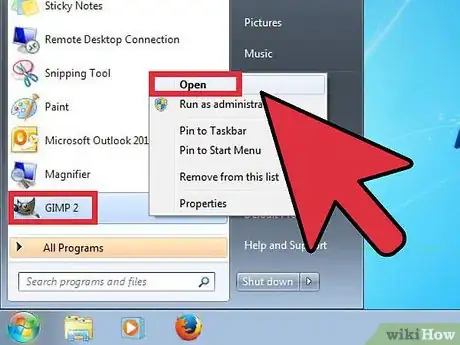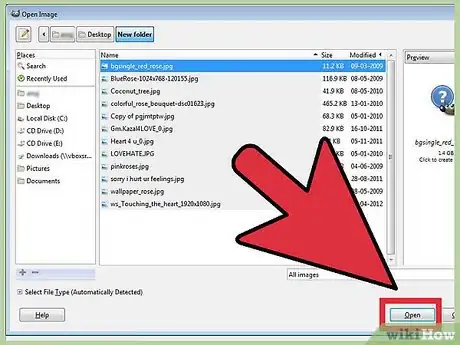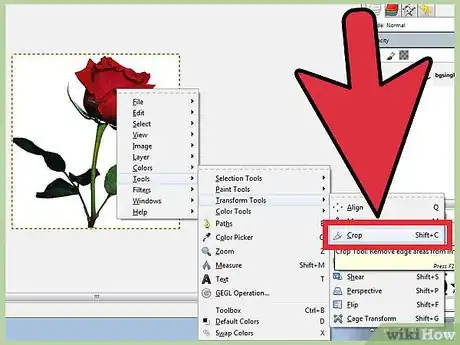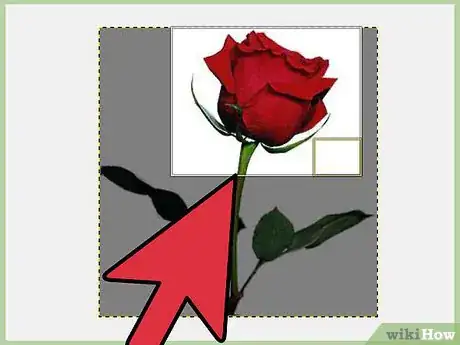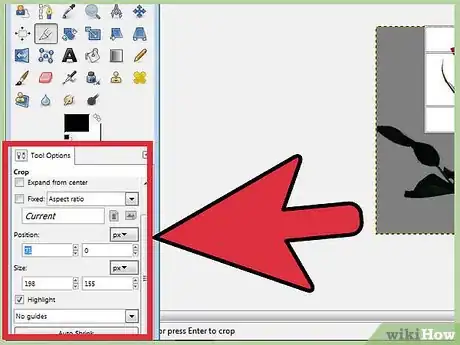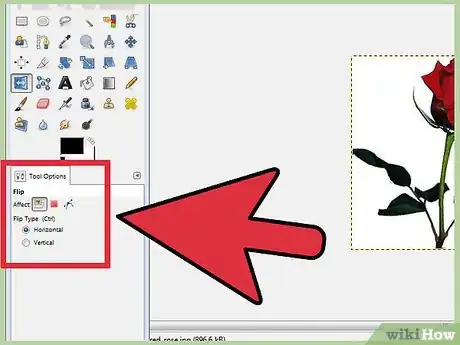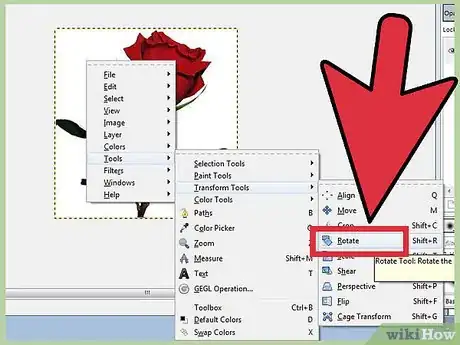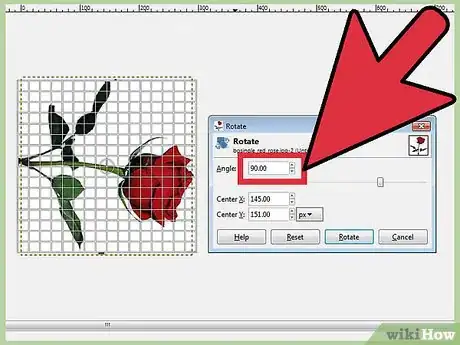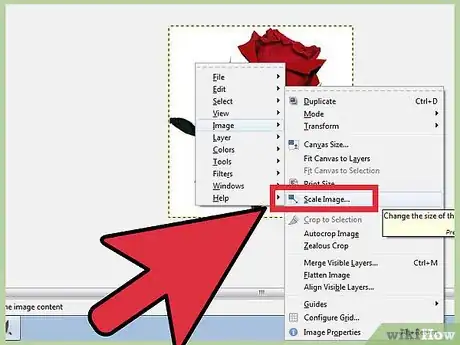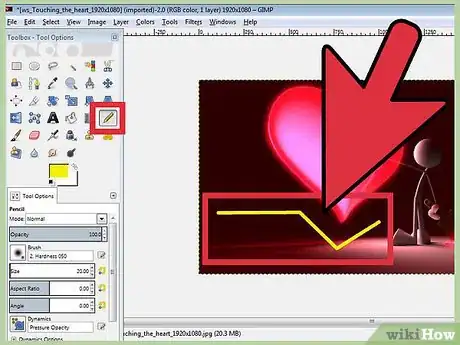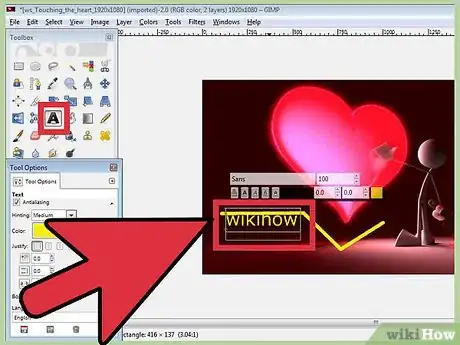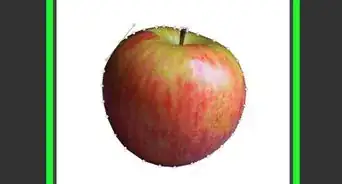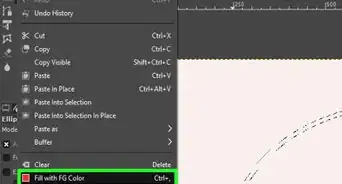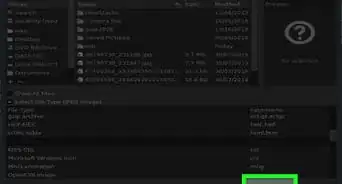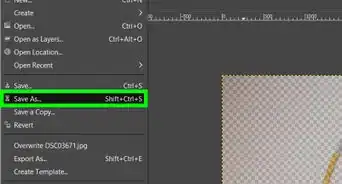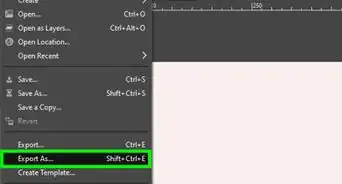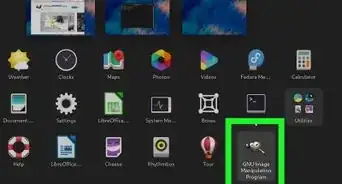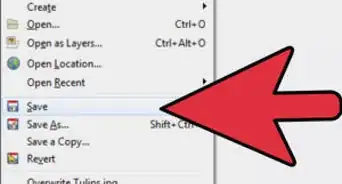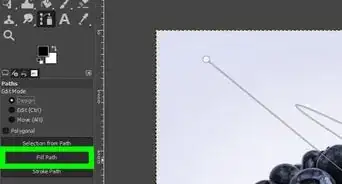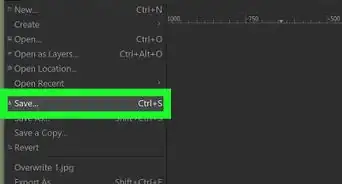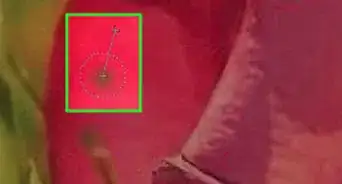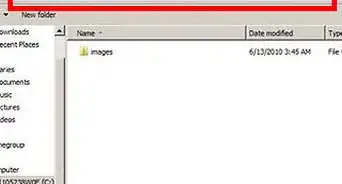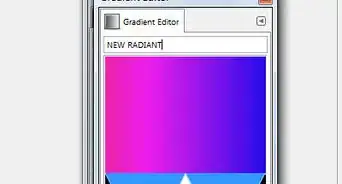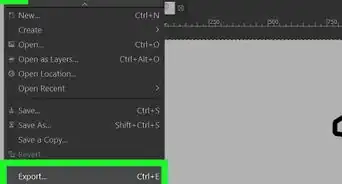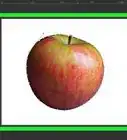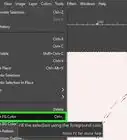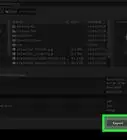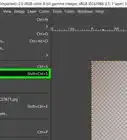X
wikiHow is a “wiki,” similar to Wikipedia, which means that many of our articles are co-written by multiple authors. To create this article, 18 people, some anonymous, worked to edit and improve it over time.
This article has been viewed 141,268 times.
Learn more...
GIMP is a software package that does a lot of what Adobe Photoshop does, but is free.
Steps
Method 1
Method 1 of 5:
Installing GIMP
-
1Download the latest version of GIMP (GNU Image Manipulation Program). You can find it for free from the developer’s website here. Click the Download GIMP X.X.X link under the GIMP for Windows heading. The setup file will begin downloading in a few seconds.
-
2Run the installer. Windows will ask if you want to run the file. Double-check to make sure that you downloaded GIMP from the developer. Select your language to proceed with the installation.
- The GIMP installer will open. To install GIMP into the default folder, click the Install button. To change any install settings, and to choose which add-ons to install, select Customize.
- GIMP will automatically associate itself with GIMP image files. To set it to open other file types, select the Customize option. You will be given an option to adjust file associations.
Advertisement
Method 2
Method 2 of 5:
Starting GIMP
-
1Start the installed program. When GIMP opens, it has to load several data files. This process can take a few minutes. When it is finished loading, several windows will appear on your screen. On the left side is the Toolbox. On the right side is the Layers menu. The middle window is where images will open.
-
2Create a new image. To start on a blank image, click the File menu in the center window and select New. The Create a New Image window will open, asking you what you would like the image size to be. You can set the size manually or select from the preset templates using the dropdown menu.
- Click OK and your new image will open. Your cursor will change to the Pen tool and you can begin drawing. Use the Layers and Brushes menu to adjust the brush type.
-
3Open an existing image. Click File, then Open. Browse for the image that you want to edit. Once you select the file, the image will open in a new window.
Advertisement
Method 3
Method 3 of 5:
Cropping an Image
-
1Open the image you wish to crop. Right-click on the image and select Tools, then Transform Tools, and then Crop & Resize. Your cursor will change to the Crop cursor, which looks like a knife. You can also select the crop tool from the Toolbox.
-
2Drag a box around what you want to keep. Dragging the box does not have to be accurate, as you will be able to adjust the box manually. Click the boxes in the corners or on the sides to adjust from that point.
-
3Adjust the box pixel by pixel. To make fine adjustments, use the Tool Options in the bottom of the Toolbox. You can change the position of the box on the image by adjusting the numbers in the Position fields. You can fine tune the size of the box by changing the values in the Size fields.
-
4Crop the image. Once the adjustments have been made, crop the image by clicking the center of the box you have made. Everything around the image will be deleted, leaving just what was inside the box.
- If you are unhappy with the crop, you can undo the action by press Ctrl+Z.
Advertisement
Method 4
Method 4 of 5:
Flipping and Rotating an Image
-
1Flip an image. Right-click on the image and select Image, then Transform, then either Flip Horizontally or Flip Vertically. Alternatively, you can click the Flip icon in the Toolbox. Under Tool Options, you can choose whether to flip horizontally or vertically.
-
2Rotate an image 90°. To perform basic image rotations, right-click the image and select Image, then Transform, then select whether you want to rotate 90° clockwise, counterclockwise, or 180°.
-
3Rotate an image at a custom angle. If you’d rather rotate the image at a custom angle, right-click the image, then select Tools, transform Tools, then Rotate. This will open the Rotate tool, where you can set the angle of rotation either with the slider or by entering a number. You can also move the center point of the rotation by entering the coordinates or dragging the circle in the picture.
Advertisement
Method 5
Method 5 of 5:
Mastering Other Basics
-
1Change the size of an image. Right-click the image. Select Image from the menu, then click Scale Image. The Scale Image window will open, and you can adjust the size of the image. Enter a new value for the length or width and the image will adjust accordingly.
- GIMP will automatically keep the aspect ratio the same by locking the numbers for length and width together. That means if you change one, the other will change automatically to keep the image from stretching or compressing. You can disable this by click the chain icon between the two boxes.
- When you are happy with your settings, click Scale to change the image size.
-
2Draw a straight line. Select a drawing tool, such as Pencil or Airbrush. Click on the image to create a starting point for your line. Hold the Shift key and move your mouse to where you want your end point. You will see a line appear connecting your starting point and your end point. Click to draw the line. Continue holding Shift to add new lines, each one starting where the previous one ended.
-
3Add text to an image. Press T on your keyboard and click where you would like your text to start. This will open the Text Toolbox. You can begin typing immediately and your text will appear on the image. Use the toolbox to adjust fonts and text effects.
Advertisement
Community Q&A
-
QuestionHow do I overlap it with another photo?
 Community AnswerLook for the "Layers" menu in the right or left sidebar. Right-click the white space with the layers and click "New Layer." Select "Transparency" under "Layer Fill Type." Select that layer and paste the image you want to overlap. Then, towards the top of the Layers menu, change the opacity to a number lower than 100%. This will make the layer partially transparent, creating an overlaying effect.
Community AnswerLook for the "Layers" menu in the right or left sidebar. Right-click the white space with the layers and click "New Layer." Select "Transparency" under "Layer Fill Type." Select that layer and paste the image you want to overlap. Then, towards the top of the Layers menu, change the opacity to a number lower than 100%. This will make the layer partially transparent, creating an overlaying effect. -
QuestionHow do I process an image in GIMP 2?
 Community AnswerFirst press Ctrl+E (or File->Export), select a file extension for the image, and Voila! You have an image made with the GNU image manipulation program (G.I.M.P.).
Community AnswerFirst press Ctrl+E (or File->Export), select a file extension for the image, and Voila! You have an image made with the GNU image manipulation program (G.I.M.P.). -
QuestionHow do I save a picture to my computer?
 Community AnswerYou highlight the pic, then drag it to your desktop. Or you can right-click on the picture and a menu will pop up, giving you the option to save to desktop.
Community AnswerYou highlight the pic, then drag it to your desktop. Or you can right-click on the picture and a menu will pop up, giving you the option to save to desktop.
Advertisement
Warnings
- Be aware that any new software can cause incompatibility issues with other software. If you're running Windows, for example, and you download a Unix-based program, you may find there are quirks in the way other programs run when the program is open. Most often, these quirks are not a problem, just be aware that they may crop up when you least expect them.⧼thumbs_response⧽
Advertisement
References
- ↑ www.gimp.org
- ↑ http://en.wikipedia.org/wiki/GNU
About This Article
Article SummaryX
1. Install the latest version of GIMP.
2. Run the installer.
3. Open the app.
4. Click File > New to create a new image.
5. Click File > Open to open an existing image.
6. Crop, flip, and rotate in the Tools menu.
7. Add text, lines, and illustrations using the toolbar.
Did this summary help you?
Advertisement

